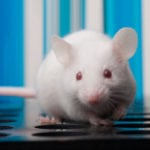 Movies and TV
Movies and TV  Movies and TV
Movies and TV  Creepy
Creepy 10 Lesser-Known Shapeshifter Legends from Around the World
 Animals
Animals 10 Amazing Animal Tales from the Ancient World
 Gaming
Gaming 10 Game Characters Everyone Hated Playing
 Books
Books 10 Famous Writers Who Were Hypocritical
 Humans
Humans 10 of the World’s Toughest Puzzles Solved in Record Time
 Mysteries
Mysteries 10 Scientific Mysteries We Don’t Fully Understand
 Weird Stuff
Weird Stuff 10 Celebrities Who Have Admitted to Alien Encounters
 Our World
Our World 10 Surprising Secrets of Notre Dame Cathedral
 Miscellaneous
Miscellaneous 10 Intriguing Origins of Popular Carnival Rides
 Movies and TV
Movies and TV 10 Actors Dragged out of Retirement for One Key Role
 Creepy
Creepy 10 Lesser-Known Shapeshifter Legends from Around the World
 Animals
Animals 10 Amazing Animal Tales from the Ancient World
Who's Behind Listverse?

Jamie Frater
Head Editor
Jamie founded Listverse due to an insatiable desire to share fascinating, obscure, and bizarre facts. He has been a guest speaker on numerous national radio and television stations and is a five time published author.
More About Us Gaming
Gaming 10 Game Characters Everyone Hated Playing
 Books
Books 10 Famous Writers Who Were Hypocritical
 Humans
Humans 10 of the World’s Toughest Puzzles Solved in Record Time
 Mysteries
Mysteries 10 Scientific Mysteries We Don’t Fully Understand
 Weird Stuff
Weird Stuff 10 Celebrities Who Have Admitted to Alien Encounters
 Our World
Our World 10 Surprising Secrets of Notre Dame Cathedral
 Miscellaneous
Miscellaneous 10 Intriguing Origins of Popular Carnival Rides
10 Strange Hybrids That Were Never Born
In the lab, it sometimes makes sense to combine the eggs and sperm of distantly related species. Scientists do it to assess the fertility of sperm or to study what happens during fertilization.
Most of these combinations—for better or worse—don’t make it very far. Maybe they’ll divide to make a two-cell embryo or perhaps a hollow ball. Either way, they eventually fizzle out.
So we’re just left with a bunch tiny, dead things . . . and one big question. What would these creatures look like if they had been born?
10 Sheep-Cow
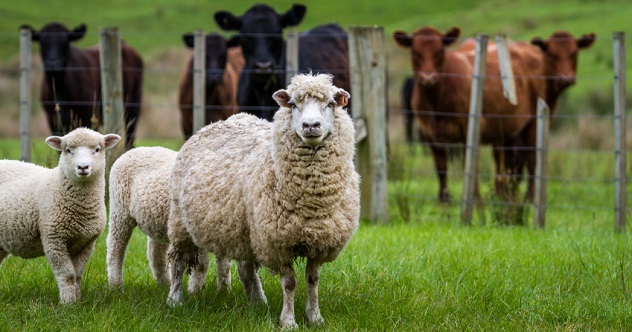
By crossing yaks and cows, we can make yakows. By crossing cows and buffalo, we can make beefalo. And every once in a while, if the stars align just right, we might manage to make a geep (part goat, part sheep).
Sheep-cow hybrids, in contrast, seem to be a bridge too far.
In the lab, we can try to force the question. In one experiment, for example, scientists inseminated cows with sheep sperm. They inseminated each cow twice, and they also tried sperm from several breeds of sheep. Unfortunately for the researchers, nothing took.
When scientists took the cow eggs out of the cow, the experiment worked a little better. In a lab dish, many of the cow eggs were fertilized by sheep sperm. Like normal embryos, they started to divide—two cells, then four cells.
In another experiment, scientists put these tiny hybrids inside surrogate sheep mothers. Here, the embryos continued to grow.
At eight cells, though, the hybrids hit a wall. Up to that point, they had relied on instructions that were already present in the egg. To get any further, they’d have to begin expressing their own genes. But they struggled to do that.
So that was the end of the line. As a result, we may never get to taste mutton-beef or visit a cuddly lamb-calf at a petting zoo. And that’s a shame.
9 House Cat–Puma
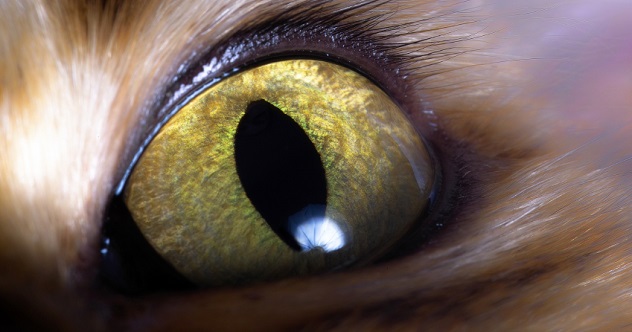
House cats have been bred with several wild species, including the African serval and the Asian leopard cat. This breeding has created new hybrids, which are sold as pets.
So far, house cats have not been bred with any larger felines such as lions or tigers. At the very least, the sex would be . . . difficult.
In a lab dish, though, the rules are different. After all, house cat eggs serve as great research tools. In various experiments, they’ve been mixed with the sperm of exotic felines, like tigers, ocelots, and bobcats.
In a 1991 paper, scientists did the reverse kind of experiment. They took eggs from the ovaries of lots of different felines. Then, as a way to test the eggs’ response to foreign sperm, they added house cat sperm.
The house cat sperm performed well. It was able to fertilize the eggs of several species, including the tiger, leopard, snow leopard, and puma. Of these tests, the house cat–puma combination developed the longest. Two hybrid embryos made it 16 cells. That’s impressive, in its own way, but still a far cry from a baby cat.
Naturally, the most disappointing part of this failed experiment is there aren’t any half-puma kittens available in pet stores.
8 Rabbit-Rat
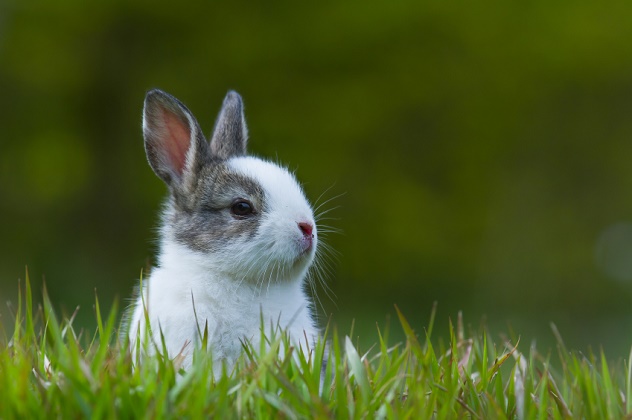
In the 1960s, scientists were still puzzling over some very basic stuff, like how sperm cells get into eggs. They also weren’t very good at in vitro fertilization. The result was a lot of experimentation that seems pretty weird by today’s standards.
In one experiment, published in 1962, scientists tried to fertilize rat eggs with rabbit sperm. That, in itself, is normal enough, at least by the standards of this list. But instead of doing it in a glass dish, as we might today, the scientists decided to set their experiment inside rabbits.
To start, the scientists mated male and female rabbits. Then, while the females’ insides were still filled with sperm, they put rat eggs inside the rabbits’ Fallopian tubes. After everything had a chance to slosh around, they took the rat eggs back out again.
Next, scientists combed through the rat eggs—more than 600 of them. Of these, they found that just one had been penetrated by the rabbit sperm. And it didn’t even penetrate all the way, just partly. Beyond that, the sperm itself looked abnormal, as if there had been something seriously wrong with it from the start.
Today, of course, this failure makes perfect sense. Rats and rabbits went their separate ways some 85 million years ago. Rabbit sperm doesn’t have the chemical know-how to get into rat eggs. Putting the eggs inside a rabbit doesn’t fix that problem.
Though this failure makes sense, it’s also kind of a shame. The 1960s were a pretty psychedelic decade. If the rabbit-rats had somehow developed to birth, they probably would have fit right in. At the very least, they might have made a nice team mascot with their long bunny ears and creepy tail.
7 Salamander-Frog
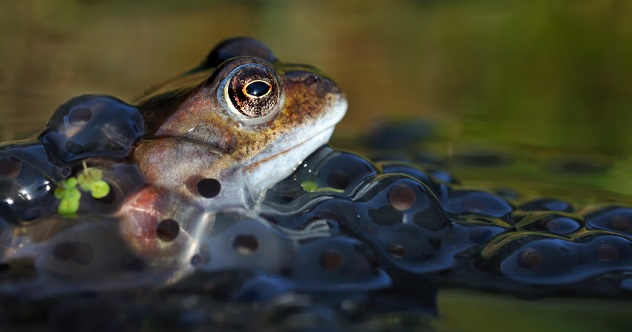
In the race to the egg, only one sperm can win. For the second-place sperm and the last-place sperm, it’s all the same. Each gets shut out of the action and barred from contributing DNA to the embryo.
Occasionally, ties do happen, but they end unhappily. A multi-sperm fertilization creates an abnormal embryo, which is doomed to an early death.
There are different ways to safeguard this winner-take-all system. In frogs, fertilization causes an electrical block, which keeps all second-place sperm out. Salamanders do something different. In salamanders, there is no electrical block, and sperm are still able to enter the egg after fertilization. Once inside, though, these latecomers just die.
In one experiment, scientists decided to mix the eggs and sperm of frogs and salamanders. One combo, frog sperm and salamander eggs, didn’t work out. The reverse combo did, however. Salamander sperm were able to fertilize the frog eggs, setting up electrical blocks.
These electrical blocks were enough to stop frog sperm, but the salamander sperm weren’t really affected. With or without the blocks, the salamander sperm still penetrated the frog eggs. So in the end, salamander sperm turned out to be even better at getting into frog eggs than the frog sperm.
Frogs and salamanders are both amphibians, and you can find them both in ponds. But they’re actually distant relatives, separated by some 300 million years of evolution. Before the first dinosaur arrived on the scene, they’d already split ways. Given that distance, an adult salamander-frog is probably impossible. We can get fertilized hybrid eggs, though, chock-full of salamander sperm. So we may have to settle for that.
6 Hare-Rabbit
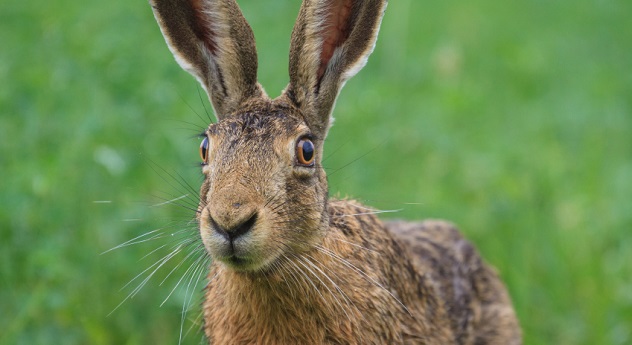
Hares and rabbits are very different. Hares are solitary, while rabbits are social. Hares live on the surface of the ground, but rabbits build burrows. Newborn hares require little care, but newborn rabbits are helpless. A hare’s color changes with the season, but a rabbit’s always remains the same.
Reports of hare-rabbit hybrids have a long history. None of these reports, however, have ever been confirmed.
Since the 1920s, different groups have tried to cross hares and rabbits using artificial insemination. With these experiments, some groups have been able to get fertilized eggs. As embryos, though, these hybrids just die.
In these experiments, scientists have found an interesting asymmetry. When rabbits are inseminated with hare sperm, many eggs are fertilized. But when hares are inseminated with rabbit sperm, few eggs are fertilized.
In a 1964 paper, scientists mixed hare sperm and rabbit sperm together, and they used this concoction to inseminate a group of rabbits. Inside the females, the two kinds of sperm competed, jostling for the same set of eggs.
The result was unexpected. Some eggs were fertilized by the hare sperm, while some eggs were fertilized by the rabbit sperm. The test was conducted on quite a few rabbits, and at the end of the experiment, it was pretty much a tie. If anything, the hare sperm might have done a little better.
At fertilization, then, the two kinds of sperm are about the same (when it comes to rabbit eggs, at least). The differences only come out later. Once inside the rabbit egg, DNA in the rabbit sperm works with DNA in the egg to build a baby bunny. The hare sperm, in contrast, just triggers a short-lived ball of cells.
5 Mouse-Rat
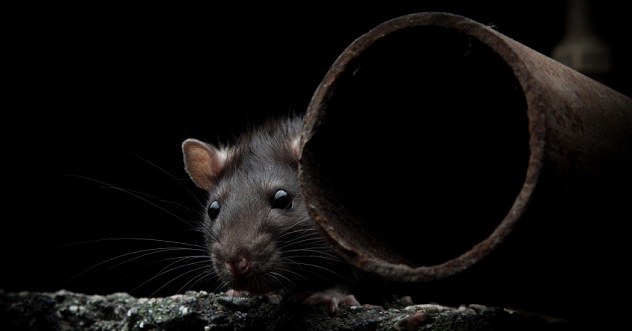
When mice and rats get together, they don’t have sex. In a more likely outcome, the rat just kills the mouse and eats it.
In a 1972 paper, scientists bypassed this normal violence. Instead, they just mixed the animals’ sex cells. To make these interactions easier, they first stripped off the eggs’ outer layer, a barrier called the zona pellucida.
When it comes to hybrids, direction can sometimes make a big difference. For example, it’s way easier to cross male lions and female tigers than to cross female lions and male tigers.
In this 1972 experiment, direction also seemed to make a difference. When the scientists paired mouse sperm and rat eggs, most of the eggs were penetrated. But in the opposite pairing—rat sperm and mouse eggs—just a few eggs were penetrated.
In a 1980 paper, scientists looked more closely at the successful combo of mouse sperm plus rat egg. They also got a bit more hands-on, injecting mouse sperm directly into the rat eggs.
In both of these experiments, they got fertilized eggs, just as they’d hoped. Some of the eggs even divided to make two-celled mouse-rats. But luckily for musophobes everywhere, that was the end of the story.
4 Fish-Hamster

Hamster eggs are great lab tools. Sperm from many different species have been used to fertilize them. These include at least half of the animals in the Chinese Zodiac, such as rats, tigers, goats, monkeys, roosters, and pigs. Any of these combinations, had they lived, would have required the construction of a very different kind of hamster wheel.
Hamster eggs have also been combined with fish sperm. One group of scientists took the DNA-containing regions of rainbow trout sperm (called the nuclei) and injected them into hamster eggs. Another group did the same with the nuclei of tilapia sperm.
Hamsters split ways with fish about 430 million years ago, sometime before the development of legs. So persuading a fish-hamster embryo to develop to term would be really, really hard. But it’s fun to dream about such a hybrid. Maybe it would have a fish’s tail, paired with a hamster’s head and chest. It might look something like a mermaid, just a lot smaller and with no sex appeal.
3 Half-Dolphin Hybrids

We love dolphins. We love swimming with them (whether they like it or not). We love listening to their songs. We love penciling in our appointments on dolphin-themed calendars. We even love giving birth in their company.
Scientists also love to study dolphins . . . especially dolphin sperm.
In a 1981 experiment, scientists used dolphin sperm to fertilize hamster eggs. To make the challenge easier, they first removed the eggs’ outer layer.
Later, in a 2015 paper, scientists mixed dolphin sperm with cow eggs and mouse eggs. This time, though, the eggs were intact, so the challenge was greater. Despite this extra difficulty, the dolphin sperm was still able to fertilize some of the cow and mouse eggs. Afterward, some of these eggs divided once, making two-celled hybrids.
“Dolphin mania” can be pretty intense. If these half-dolphin hybrids did manage to make it to two trillion cells instead of just two, there’s a good chance that someone, somewhere, would manage to love them.
Maybe this someone would enjoy the hybrids’ music, complete with half-moos and half-squeaks. Or perhaps they would purchase new calendars adorned with hooves and whiskers, in addition to dorsal fins. Or they might even build special stalls/tanks in order to give birth with them.
Or maybe not.
2 Pig-Marine Worm

After fertilization, calcium levels go up and down inside the egg. This happens over and over. Each cycle is called an “oscillation.”
These oscillations are triggered by a special factor brought in by the sperm. This factor seems to be pretty much the same across a lot of different species. Mashed-up bits of frog sperm trigger oscillations when injected into mouse eggs, as do mashed-up bits of chicken sperm.
In a 2000 paper, scientists got this trick to work across an even bigger species barrier. A mammal, the pig, provided the sperm. A marine worm, Cerebratulus lacteus, provided the eggs. Obviously, this was no easy feat. Pigs and marine worms split ways some 850 million years ago. That’s about as far apart as two animals can possibly be while still being animals.
Once inside the worm eggs, the mashed-up bits of pig sperm triggered calcium oscillations. Using just this measure, it looked a lot like normal fertilization. There was, of course, no chance that this experiment would ever give us a full-grown hybrid. For starters, it didn’t involve any intact pig sperm, just some sperm pieces. The 850-million-year gap between the two species was an equally serious problem.
Still, it’s fun to dream. Imagine, maybe, a new sea animal living in the Atlantic. Perhaps it would have a pig’s head and snout attached to a long, wriggly body. Though frightful in appearance, it could taste like bacon when caught and fried.
1 Half-Human Hybrids

Early in the 20th century, a Russian scientist, Ilya Ivanovich Ivanov, tried to make human-chimpanzee hybrids. Using artificial insemination, he introduced human sperm into chimp females. Much to his disappointment, he didn’t get any babies.
Humans and chimpanzees only separated about six million years ago. In modern times, we’ve formed hybrids across much wider gaps than that. So given some modern know-how, it might be possible to succeed where Ivanov failed. We even have a cute name ready and waiting for this hybrid: the humanzee.
Since Ivanov’s time, though, the legal landscape has also shifted. Even if someone did want to make a humanzee, it would be hard to get funding for it.
Other human-animal combos are less controversial. In a popular fertility test, for example, human sperm is used to fertilize hamster eggs. The result is a short-lived embryo called a humster.
Humans and hamsters are separated by some 90 million years—15 times the distance between humans and chimps. So the chance that a human-hamster might develop into something alarming, something with a body or a brain, is basically zero. Nonetheless, just to be sure, the convention is to destroy these embryos as soon as the experiment is over.
In other experiments, human sperm has been injected into mouse eggs, rabbit eggs, and pig eggs.
Rachel Rodman writes about hybrids, chimeras, and interspecies organ transplants. You can read more at her website, rachelrodman.com.

